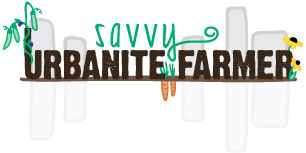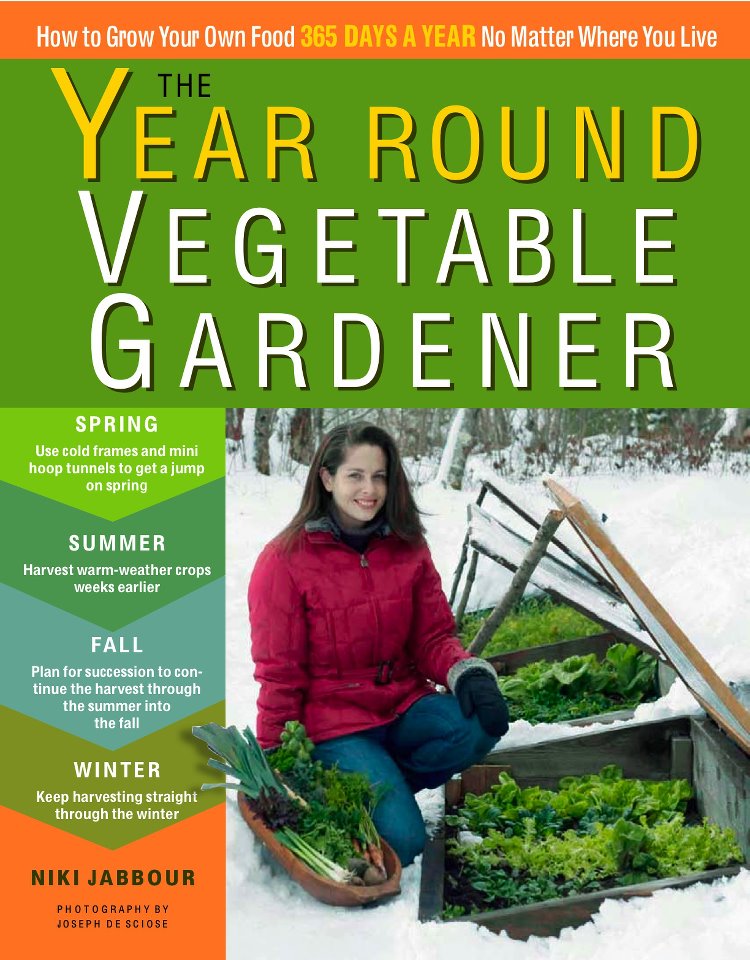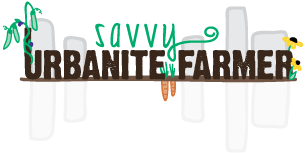 The Year-Round Vegetable Gardener: How to Grow Your Own Food 365 Days a Year, No Matter Where You Live by Niki Jabbour
The Year-Round Vegetable Gardener: How to Grow Your Own Food 365 Days a Year, No Matter Where You Live by Niki Jabbour
When I saw The Year-Round Vegetable Gardener on the library’s “new” shelf, I snagged it up without hesitation. I love gardening, and I would very much like to see how I can grow my own food all year round — despite being in the middle of zone 5 and living in the city.
Jabbour does a fairly good job of glossing over a wide variety of the science topics such as timing, temperature, and light needs of the plants. I was most surprised, however, at the depth on which she talks about keeping a decently healthy soil with a combination of organic methods like crop rotation, cover crops, and organic fertilisers. As a soil scientist, I approved heartily of this, and applaud her spending more than a page or to on the topic. You’ll find this section useful for getting ideas on how to fertilise your soil even if you aren’t doing year round intensive gardening. She briefly introduces fertiliser types such as rotted manure and bone meal, but also lesser well known ones such as kelp and alfalfa meal.
I really liked the introduction Jabbour makes for intensive farming in small spaces, which will be very useful for urban and rural farmers alike when it comes to growing a lot lot in a small space. While there are whole volumes of books written on the subject, as well as experimentation as to what works best together, Jabbour does a really good job of explaining the basics and giving the beginner a good head start. She specifically introduces the wonders of successional planning and interplanting methods which increase the amount of vegetables you can grow in a smaller space. This is where she spends most of her time at as this is what she uses. She also briefly mentions vertical farming, but doesn’t go into any real details.
The reader should be warned, though, that this book focuses heavily on winter farming with cold frames and tunnels. It gives you tips on how to plant, when to plant, and what to plant. In the back of the book it also gives the blueprints for building the same cold frame she uses. This is not a bad thing — unless you really don’t know a whole lot about gardening the rest of the year. If you want some great tips on how to make the most of your space to get vegetables all year round, this is definitely for you.
The best part of the book for intermediate level gardeners is the second half of the book. This second half goes over the various type of vegetables, when to plant them (usually from seed), how to take care of them, and how to harvest. There are lots of helpful tips for many different types of vegetables and even some herbs. These tips are fairly standard if you take the time to read the catalogues, but then adds a twist of how to use in the successional intensive gardening the whole book is about. If you read no other section of the book, this latter half is what you should focus on so you can really use your area to your healthy benefit.
All in all, this was a pretty good book for beginners to gardening, and even had a few tips for urbanites to get their patio gardens thriving in a small space. The cons of this book were that it didn’t go into a whole lot of science about why crops need what they need, how cover crops work, and why you really want them for increase the nutrient of the soil. So, if you are looking for more advanced gardening books infused with the background logic behind things, this is not for you.
Would I recommend it? Yes. If nothing else, browse through it for some fun ideas on the plants in the second half of the book.


